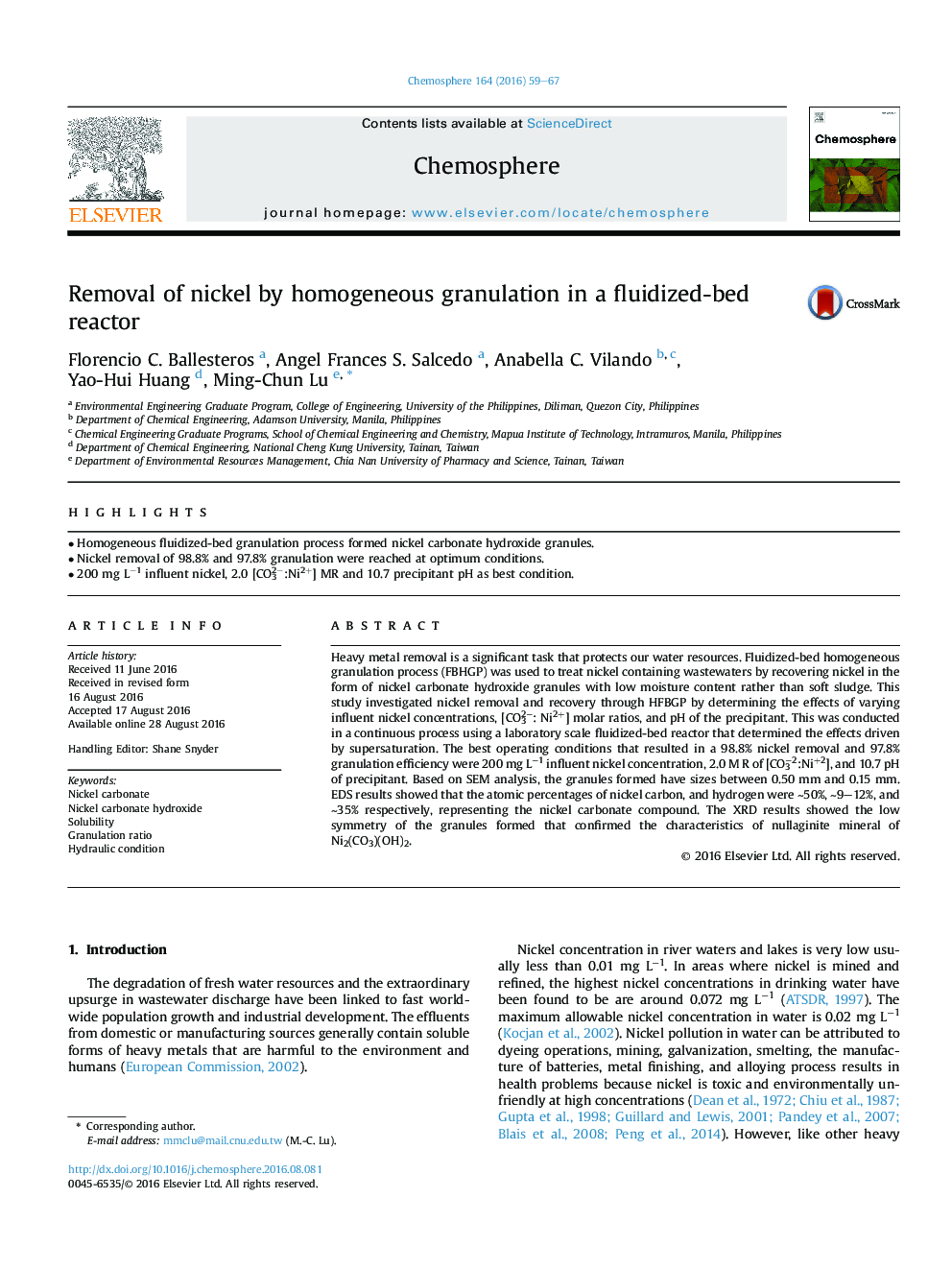| کد مقاله | کد نشریه | سال انتشار | مقاله انگلیسی | نسخه تمام متن |
|---|---|---|---|---|
| 6306122 | 1618807 | 2016 | 9 صفحه PDF | دانلود رایگان |
- Homogeneous fluidized-bed granulation process formed nickel carbonate hydroxide granules.
- Nickel removal of 98.8% and 97.8% granulation were reached at optimum conditions.
- 200 mg Lâ1 influent nickel, 2.0 [CO32â:Ni2+] MR and 10.7 precipitant pH as best condition.
Heavy metal removal is a significant task that protects our water resources. Fluidized-bed homogeneous granulation process (FBHGP) was used to treat nickel containing wastewaters by recovering nickel in the form of nickel carbonate hydroxide granules with low moisture content rather than soft sludge. This study investigated nickel removal and recovery through HFBGP by determining the effects of varying influent nickel concentrations, [CO32â: Ni2+] molar ratios, and pH of the precipitant. This was conducted in a continuous process using a laboratory scale fluidized-bed reactor that determined the effects driven by supersaturation. The best operating conditions that resulted in a 98.8% nickel removal and 97.8% granulation efficiency were 200 mg Lâ1 influent nickel concentration, 2.0 M R of [CO3â2:Ni+2], and 10.7 pH of precipitant. Based on SEM analysis, the granules formed have sizes between 0.50 mm and 0.15 mm. EDS results showed that the atomic percentages of nickel carbon, and hydrogen were â¼50%, â¼9-12%, and â¼35% respectively, representing the nickel carbonate compound. The XRD results showed the low symmetry of the granules formed that confirmed the characteristics of nullaginite mineral of Ni2(CO3)(OH)2.
Journal: Chemosphere - Volume 164, December 2016, Pages 59-67
